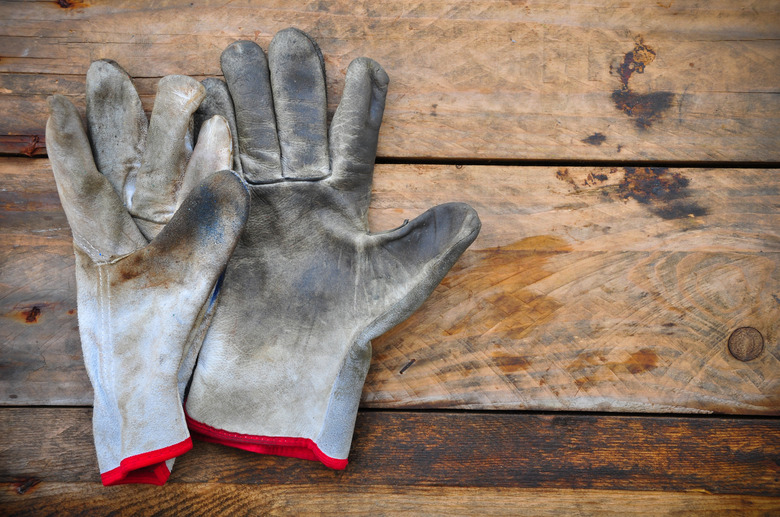How To Get Rid Of Quack Grass
Some say the best solution to an infestation of quack grass (Elytrigia repens or Agropyron repens) is to move house, but this weed can be controlled with doggedness or herbicides. A cool-season, perennial grass that grows in U.S.
Some say the best solution to an infestation of quack grass (Elytrigia repens or Agropyron repens) is to move house, but this weed can be controlled with doggedness or herbicides. A cool-season, perennial grass that grows in U.S. Department of Agriculture plant hardiness zones 3a to 9b, quack grass mainly spreads through underground shoots, called rhizomes. These are white or yellow and sharp-pointed, penetrating soil easily. Quack grass also spreads through seeds that develop on long spikes in late spring through summer.
Quack Grass Control
The key to controlling quack grass is understanding how it spreads. Quack grass rhizomes grow 6 to 8 feet long, and at every inch or so there are nodes, which look like joints. Each node can produce roots and sprout into a new plant, so rototilling, pulling up or digging up quack grass often makes the problem worse because each piece of broken rhizome develops into a new plant. To control quack grass, you must starve the rhizomes by regularly removing their leaves or preventing them from receiving light. Or you can apply systemic herbicides, which destroy the rhizomes as well as the plant's leaves.
Cultural Control
Controlling quack grass without herbicides is a long-term project. Put on gloves to protect your hands from the sharp leaves, and pull up the quack grass plants. If the quack grass is too firmly rooted to remove easily, prune the plants as close to the ground as possible with pruning shear. Sterilize the shears by wiping the blades with a cloth soaked in rubbing alcohol when you've finished. Spread a 3- to 4-inch layer of organic mulch, such as compost, wood chips or shredded bark. When quack grass leaves appear through or at the edge of the mulch, pull them out. If quack grass appears at a distance from the mulch, carefully dig the plant up, and its rhizome, which will probably lead back to the original patch. Take care not to break the rhizome. Put quack grass plants in the trash and not on your compost pile.
Chemical Control in Annual Beds
In annual flower beds and vegetable patches, you can control quack grass by spraying with glyphosate when there are no desirable plants growing. A herbicide that damages most plants, glyphosate travels through plants and destroys their roots and rhizomes. It's most effective on quack grass after a fertilizer application to boost the plant's growth. Dilute a water-soluble, 24-8-16 fertilizer at a rate of 1 tablespoon per 1 gallon of water, and apply 1 gallon of the fertilizer solution per 10 square feet of of quack grass. One week later on a dry, still day, put on protective clothing such as long pants, a long-sleeved shirt and gloves, and spray quack grass with a ready-to-use 2 percent glyphosate and 2 percent pelargonic acid and related fatty acids product. Spray all the leaves and stems, and don't cultivate the ground for two weeks. Spray again as needed every 30 to 45 days.
Chemical Control in Perennial Beds
When controlling quack grass with herbicides in perennial beds, it's hard to avoid spraying desirable plants, but selective herbicides provide a solution. Some herbicides target grasses, and these are safe to use around most perennial plants except ornamental grasses and plants with grasslike or swordlike stems. To be completely safe, it's best to cover all the plants you wish to keep with paper bag loosely tied at the base when spraying herbicides on a perennial bed. Put on protective clothing, and spray quack grass plants with a ready-to-use 0.48 percent fluazifop-p-butyl herbicide, on a dry, still day when the quack grass is actively growing. Paint the herbicide on quack grass leaves and stems if it's difficult to avoid spraying desired plants. Remove the bags from plants when the herbicide is dry, and spray the quack grass again if it reappears.
Quack Grass in Lawns
Effective lawn maintenance controls quack grass in lawns, and you can treat isolated patches with glyphosate. Fertilize and mow your lawn regularly to encourage dense, fast-growing turf that out-competes quack grass. Apply 1/4 to 1/2 pound of nitrogen per 1,000 square feet every two weeks during the growing season. If the weather is dry, irrigate the lawn so that the soil stays moist to a depth of 8 inches, or stop fertilizing because the grass won't use up the nitrogen. Mow every week while the grass is growing. Put on protective clothing, and spray patches of quack grass with a ready-to-use 2 percent glyphosate and 2 percent pelargonic acid and related fatty acids herbicide on a dry, still day. Two weeks later spray the patch again. After seven days, the area will be bare and ready for sowing with lawn grass.
